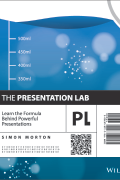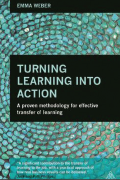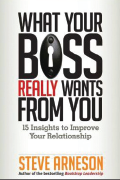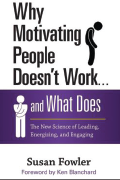TD Magazine Article
Business Communication Chemistry
A review of The Presentation Lab: Learn the Formula Behind Powerful Presentations by Simon Morton
Mon Sep 08 2014

The Presentation Lab: Learn the Formula Behind Powerful Presentations
By Simon Morton
Wiley, 272 pp., $30
Business communication has evolved beyond the formal boardroom setting into informal, latte-sipping, napkin-writing chats and participation on social media outlets. How can presenters make the most of these informal interactions? Morton's The Presentation Lab delivers a method for engaging and inspiring an audience accustomed to easy-come, easy-go business communication.
Morton starts with the basics, explaining the purpose of a presentation, identifying commonly used presentation tools, defining the basic elements of a presentation, crafting compelling content, and delivering the end product. His writing style is informal and quirky. (Who can resist flipping to a chapter titled "PowerPoint, the Shed, & an Electric Screwdriver"?)
Morton defines a successful presentation as a passionate, visual, engaging interaction with an audience of any size. He debunks many presentation myths, but reminds readers of an important concept—"be audience focused"—which is often forgotten, resulting in the lackluster presentations audience members dread.
The Presentation Lab offers several unique ways to improve readers' presentations. An example is a unique visual tool called an "audience heat map," which identifies three common audience types. Morton also dedicates part of the book to discussing how to turn a presentation into a storytelling experience that will hook the audience. The section "Must, Intend, Like" is another simple yet effective approach that will help presenters focus on the main message they are seeking to communicate.
The section on "Creating Compelling Content" reminds us why we should not recycle slides from previous presentations, or resort to off-the-shelf clip art. When developing content, Morton says, remember this motto: "Simplicity is not stupidity." He also discusses blended delivery formats; motivating readers to move out of their presentation-delivery comfort zones; and choosing the right format for the job, whether it's Prezi, PowerPoint, video, or face-to-face conversations.
One of the book's greatest strengths is Morton's sense of humor and the relatable stories he includes, making it feel as if the reader is conversing one-on-one with him. Unlike most business books, this one is jam-packed with creative visuals for extra punch. A word of caution: Morton doesn't cover presentation soft skills or how to use PowerPoint; however, he points readers to numerous other resources available on those topics.
Keep The Presentation Lab within arm's reach when preparing for any presentation. Scribble notes in the margins, dog-ear favorite pages, refresh yourself on Morton's ideas and tips, and of course, share it with others.
Turning Learning Into Action: A Proven Methodology for Effective Transfer of Learning

Emma Weber
Kogan Page, 264 pp., $39.95
Weber's Turning Learning Into Action methodology has been adopted by such corporate giants as BMW, Apple, Subaru, Land Rover, Colgate, Cisco, and Nokia. Deemed a "significant contribution" to the learning and development field by Jack and Patti Phillips of the ROI Institute, Turning Learning Into Action presents a no-nonsense process for developing training that brings about genuine behavioral change. Maintaining that a crippling flaw in many training programs is a lack of accountability (of both the employees and the trainers), Weber focuses on consistent, systematic follow-up after the training event to ensure learning is applied. She explains who should be conducting the follow-up and when, what questions to ask, and what to do when trainees get off track.
What Your Boss Really Wants From You: 15 Insights to Improve Your Relationship

Steve Arneson
Berrett-Koehler, 120 pp., $15.95
In What Your Boss Really Wants from You, Arneson offers guidance for improving your relationship with the most important person in your professional life: your boss. This simple roadmap contains tried-and-true strategies based on the author's years of leadership and coaching experience. You'll learn how to understand and anticipate your boss's behavior, how to become aware of what he really thinks about you, and how to cultivate the attitudes and behaviors required for success. The book includes real-life examples of people who have used these techniques successfully, making their time at work less stressful and more productive. No matter what your boss is like, Arneson can help you get what you want out of the relationship so that you're both happy.
Why Motivating People Doesn't Work ... And What Does

Susan Fowler
Berrett-Koehler, 216 pp., $24.95
Think of this book as Daniel Pink's Drive for trainers. As a senior consulting partner with the Ken Blanchard Companies, Fowler has spent 15 years studying what motivates employees and witnessing the repeated failure of the carrot-and-stick approach. She explains why our current approaches to engaging employees have not caught up with the science of motivation. Employees, she claims, are motivated by core psychological needs: having autonomy, feeling relevant, and feeling competent. Fowler explains how to implement strategies that will help employees fulfill these needs throughout the course of their typical workdays. "Motivation is a skill," Fowler says, and like any skill, it can be learned.
What's on Liz Wiseman's Bookshelf?
A More Beautiful Question: The Power of Inquiry to Spark Breakthrough Ideas by Warren Berger. This book is a great tool for leaders seeking to lead through inquiry and ask powerful questions. Berger helps us see that our natural state is one of curiosity. Instead of helping us learn a new skill, the book helps us return to a once-natural state.
Creativity, Inc.: Overcoming the Unseen Forces That Stand in the Way of True Inspiration by Ed Catmull and Amy Wallace. This delightful book shows that designing a creative, playful environment is actually a lot of work. Leaders need to see and remove the seemingly invisible barriers to creativity. The book also offers a powerful illustration of both multiplier leadership and rookie smarts in action.
The Power of Habit: Why We Do What We Do in Life and Business by Charles Duhigg. The book illustrates how much of our work and life is ruled by habit. While some might read this book to learn how to break bad habits, I was eager to learn how we can break good habits—because even good habits become limiting when the world is changing as fast as it is today.
